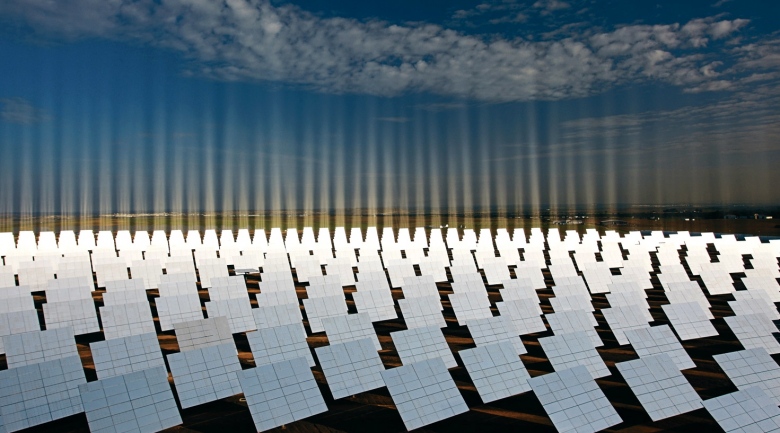
A thin sheet of dyed plastic could cut the cost of solar power, particularly for applications that require solar cells to be highly efficient and flexible.
Researchers at the University of Illinois at Urbana-Champaign are using the plastic to gather sunlight and concentrate it onto a solar cell made of gallium arsenide in an experimental setup.
Doing so doubled the power output of the cells.
So far, the researchers have shown that the approach works with a single solar cell, but they plan to make larger sheets of plastic dotted with arrays of many tiny solar cells. The approach could either let a smaller solar panel produce more electricity, or make a panel cheaper by reducing the amount of photovoltaic material needed.
As light hits the plastic sheet, a specially selected dye absorbs it. The dye is luminescent—meaning that after it absorbs light, it reëmits it. But the light it emits is largely confined inside the plastic sheet. So it bounces along inside the plastic until it reaches a solar cell, much in the same way light is guided along inside a fiber optic cable. The dye absorbs only part of the solar spectrum. So to further boost power output, the researchers added a reflective material that directs some of the light that the dye doesn’t absorb to the solar cell.
The approach could be compatible with another innovation from the same group of researchers—a technique for making flexible and stretchable solar cells that can conform to irregular surfaces
